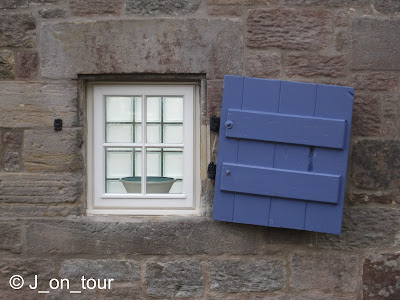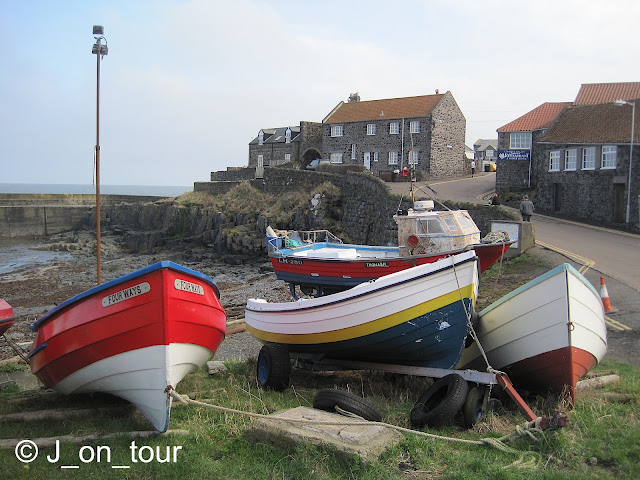Although hillwalking is one of my personal interests, i was approached, due to my map reading skills, to see if i would lead or arrange some walks for a church group that i am a member of. The walks would have to be achievable (not too much of an incline), plenty of refreshment stops & interesting for about 12 -15 people who were reasonably fit. About 1/3 of the group have experienced hillwalking in the past so the reins are definitely trying to hold me back. I was fortunate enough to be given the first walk on a plate as it came from a website, it was a sample of what was expected of me. The 7 mile walk started in Craster & was a clockwise circular walk to Embleton.
The walk took place on Easter Saturday when the Daffodils were in full bloom
...where i was quite taken with this window. some of the group saw me taking this picture & couldn't understand why until they saw the result later. I thought it was quite arty at the time.
We had a refreshment stop on the back patio of the Greys Inn at Embleton. The weather forecast was for rain, but amazingly, the clouds didn't drop their contents on us as that may have put the beginners off future walks !
Embleton is a quiet place with one shop in the main street and a nearby Golf course.
After lunch in the sand dunes, the walk on the beach & along the coastal path past the golf course, we came to the famous Dunstanburgh castle. At this point, it was noticeable how the cloud formation & the weather had significantly improved.
Dunstonburgh Castle occupies a strategic site on the Northumberland coast and is the largest castle in the county. Although the site was occupied in prehistoric times, the most recent building was built in the early 14th century by the Earl Thomas of Lancaster. During the second half of the same century, John of Gaunt, Duke of Lancaster made impressive additions to the site.
The Castle was a northern outpost for the Lancashire side in The war of the Roses as they sought to establish an Eastern foothold in Northern England. It was an object of attack by The Yorkshire army as reports suggest by the mid 16th century that it's usefulness as a fortification was poor.
Sir Arthur Sutherland was the last private owner and gave it up in 1929 to a series of successive preservation companies. It is now owned and looked after by The English Heritage.
A nice grassy coastal walk brought us back into the fishing village of Craster famous for "Craster Kippers"...
where i had a bit of spare time to indulge in some art style photography while the others...
...contemplated the coffee shop which turned out to be very nice just around the corner out of view
Everyone enjoyed the day and wanted to repeat the experience. I warned them that it may not be so easy to replicate such a walk with the distance, the refreshment stops &......the weather!










I just love the colours of the little boats, and the lobster pots match them quite nicely. Oh we do have such loveley scenery round these parts.. Den x
ReplyDelete